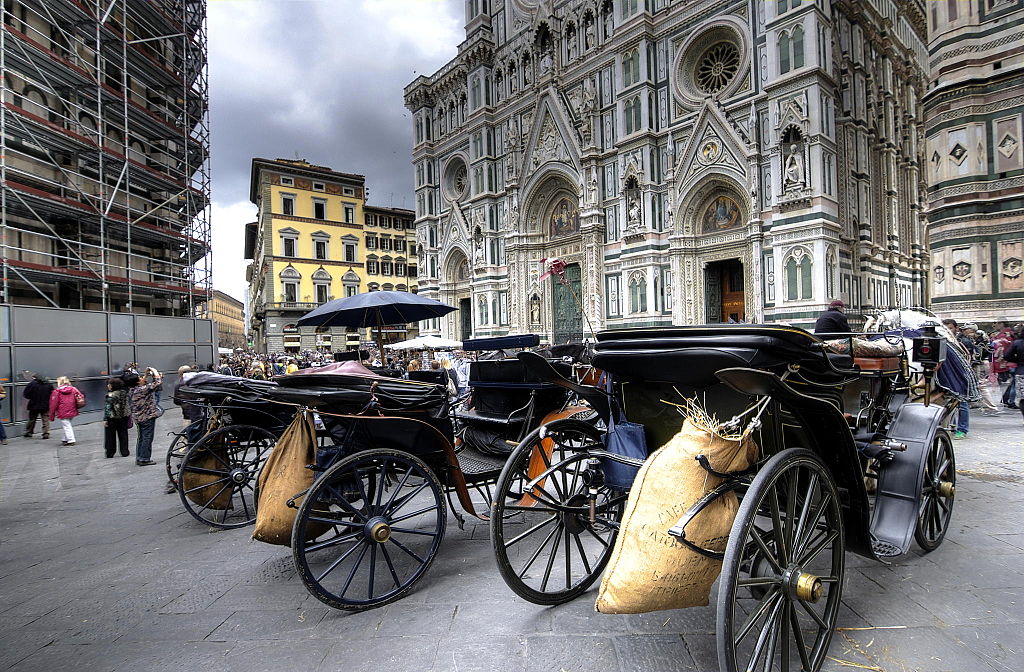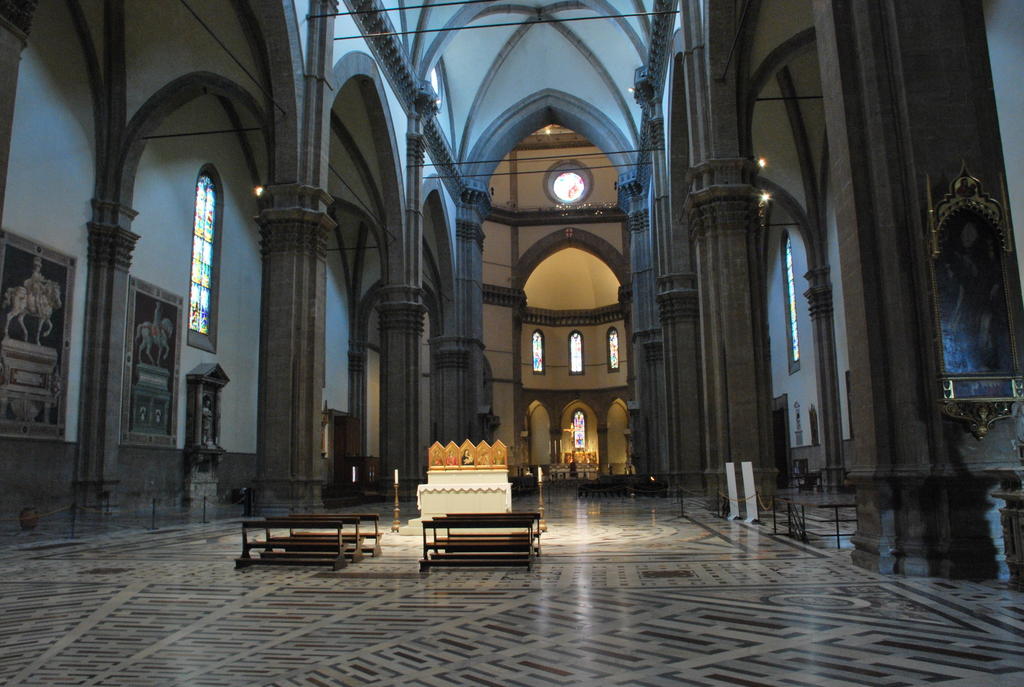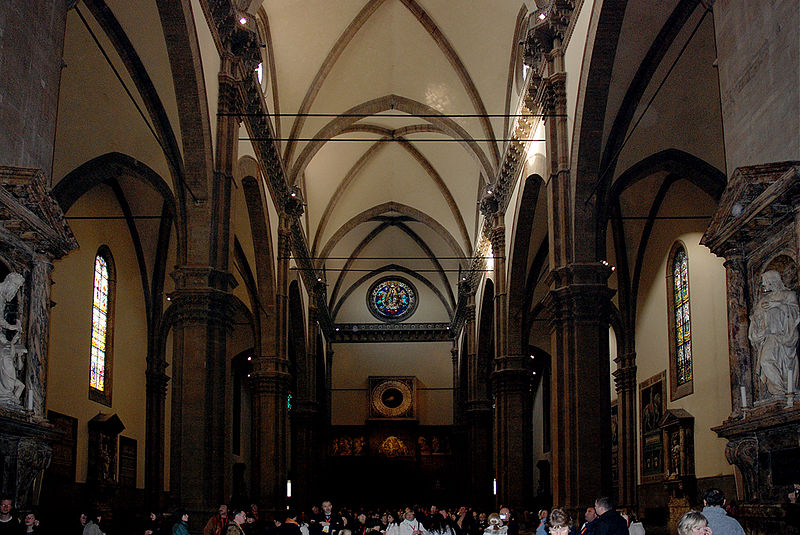The Cattedrale di Santa Maria del Fiore (English, "Cathedral of Saint Mary of the Flower") is the main church of Florence, Italy. Il Duomo di Firenze, as it is ordinarily called, was begun in 1296 in the Gothic style to the design of Arnolfo di Cambioand completed structurally in 1436 with the dome engineered by Filippo Brunelleschi. The exterior of the basilica is faced withpolychrome marble panels in various shades of green and pink bordered by white and has an elaborate 19th-century Gothic Revival façade by Emilio De Fabris.
The cathedral complex, located in Piazza del Duomo, includes the Baptistery and Giotto's Campanile. The three buildings are part of the UNESCO World Heritage Site covering the historic centre of Florence and are a major attraction to tourists visiting the region of Tuscany. The basilica is one of Italy's largest churches, and until development of new structural materials in the modern era, the dome was the largest in the world. It remains the largest brick dome ever constructed.
The cathedral is the mother church of the Roman Catholic Archdiocese of Florence, whose archbishop is currently Giuseppe Betori.
Santa Maria del Fiore was built on the site of an earlier cathedral dedicated to Saint Reparata. The ancient structure, founded in the early 5th century and having undergone many repairs, was crumbling with age, as attested in the 14th-century Nuova Cronica of Giovanni Villani, and was no longer large enough to serve the growing population of the city.Other major Tuscan cities had undertaken ambitious reconstructions of their cathedrals during the Late Medieval period, as seen at Pisa and particularly Siena where the enormous proposed extensions were never completed.
Giotto's bell tower (campanile)
The new church was designed by Arnolfo di Cambio and approved by city council in 1294. Arnolfo di Cambio was also architect of the church of Santa Croce and the Palazzo Vecchio. He designed three wide naves ending under the octagonal dome, with the middle nave covering the area of Santa Reparata. The first stone was laid on September 9, 1296, by Cardinal Valeriana, the first papal legate ever sent to Florence. The building of this vast project was to last 140 years, the collective efforts of several generations; Arnolfo's plan for the eastern end, although maintained in concept, was greatly expanded in size.
The Duomo, as if completed, in a fresco by Andrea di Bonaiuto, painted in the 1360s, before the commencement of the dome
After Arnolfo died in 1310, work on the cathedral slowed for the following thirty years. When the relics of Saint Zenobius were discovered in 1330 in Santa Reparata, the project obtained new impetus. In 1331, the Arte della Lana, the guild of wool merchants, took over exclusive patronage for the construction of the cathedral and in 1334 appointed Giotto to oversee the work. Assisted by Andrea Pisano, Giotto continued di Cambio's design. His major accomplishment was the building of the campanile. When Giotto died in 1337, Andrea Pisano continued the building until work was again halted due to the Black Death in 1348.
In 1349, work resumed on the cathedral under a series of architects, commencing with Francesco Talenti, who finished the campanile and enlarged the overall project to include the apse and the side chapels. In 1359 Talenti was succeeded by Giovanni di Lapo Ghini (1360–1369) who divided the center nave in four square bays. Other architects were Alberto Arnoldi, Giovanni d'Ambrogio, Neri di Fioravante and Andrea Orcagna. By 1375, the old church Santa Reparata was pulled down. The nave was finished by 1380, and by 1418, only the dome remained incomplete.












